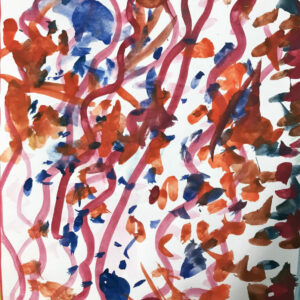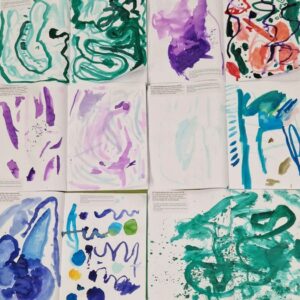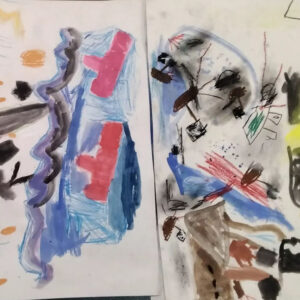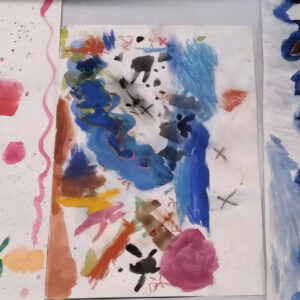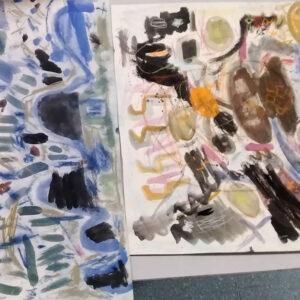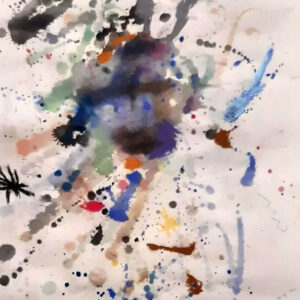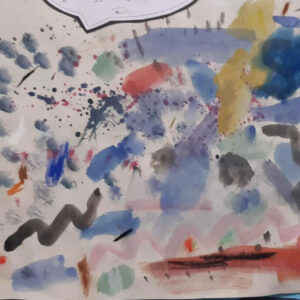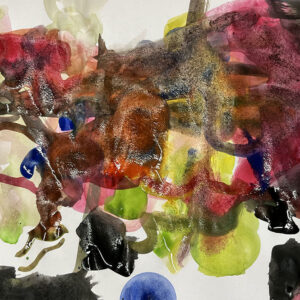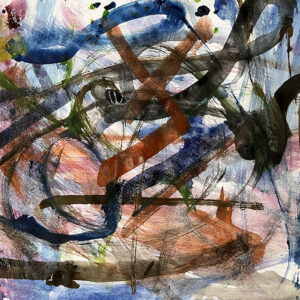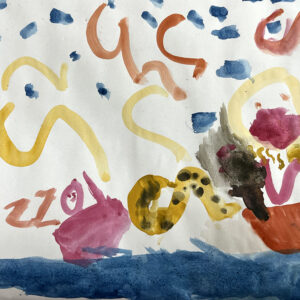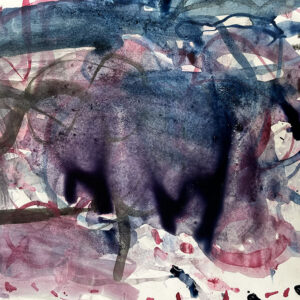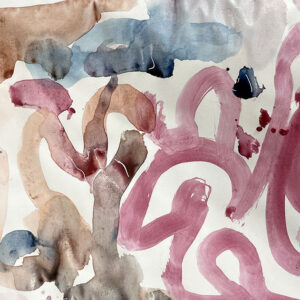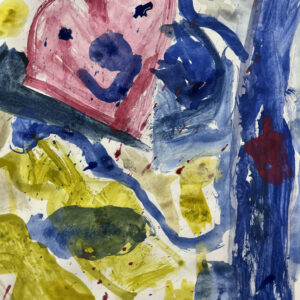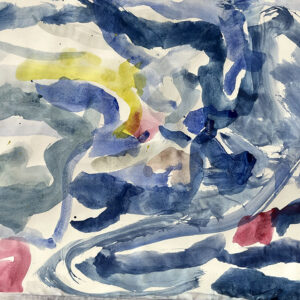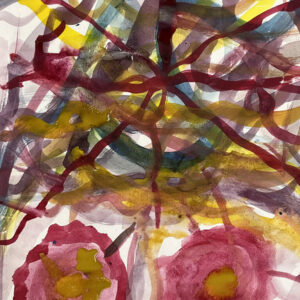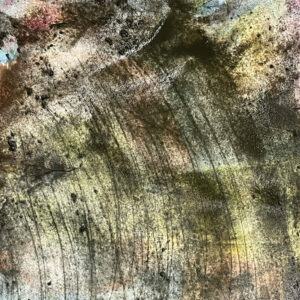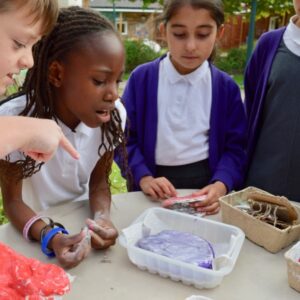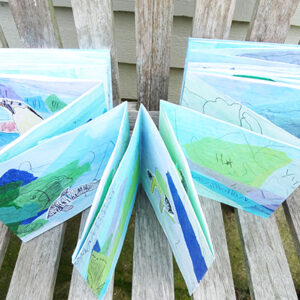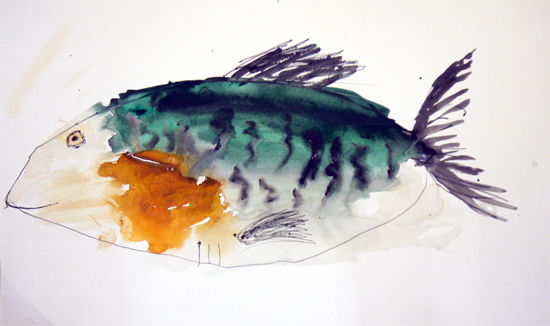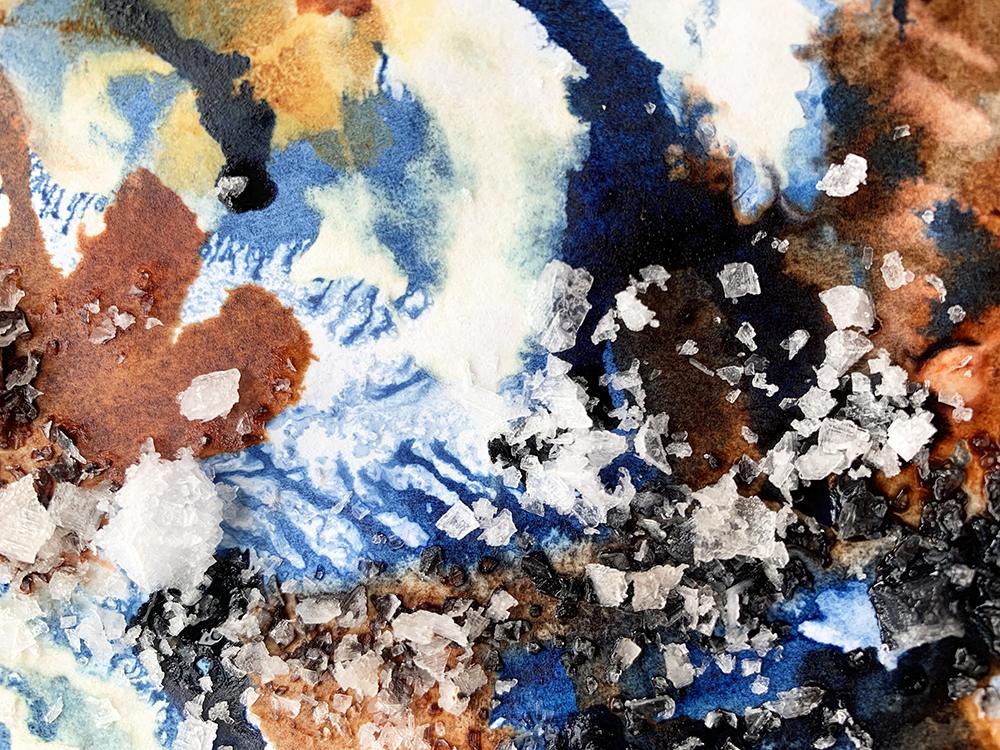Pathway for Years 1 & 2
Disciplines:
Painting (Watercolour)
Key Concepts:
-
That watercolour paint has special characteristics.
-
That we can use the elements of surprise and accident to help us create art.
-
That we can develop our painting by reflecting upon what we see, and adding new lines and shapes to help develop imagery.
In this pathway children are introduced to watercolour. Through an open and exploratory approach, children not only discover what watercolour can do, how it acts and how they can “control” it, but also how the watercolour itself can help reveal the “story” of the painting.
Themes:
Exploration, Discovery
Medium:
Watercolour
Artists: Paul Klee, Emma Burleigh
If you use this resource in your setting, please tag us on social media: #InspiredBy @accessart (facebook, twitter) @accessart.org.uk (instagram) and share the url. Thank you!
![]()
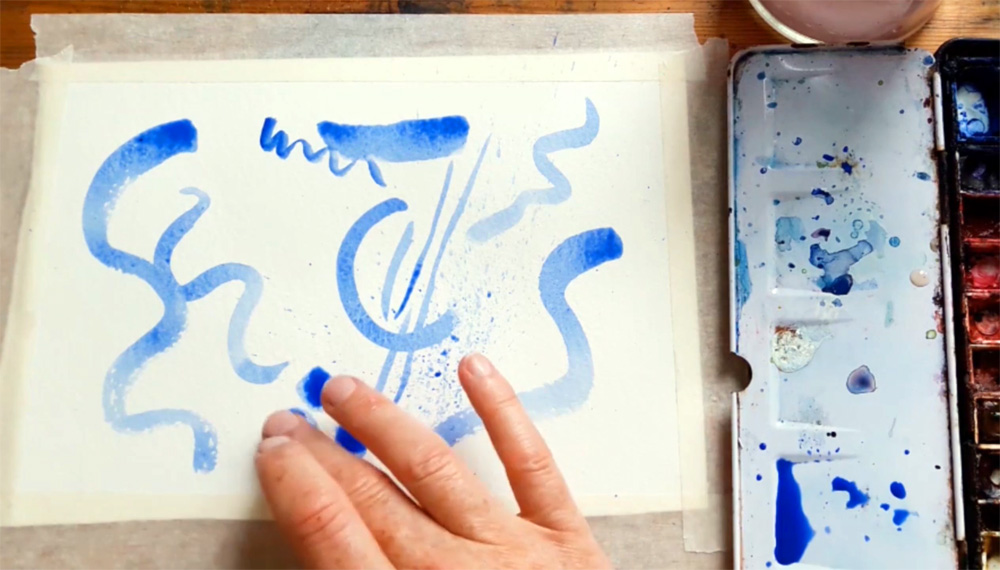

Teaching Notes
Please find the CPD session recording of the Exploring Watercolour pathway here.
Find the MTP for this pathway here.
Curriculum Links
Geography: Adapt by choosing colour palettes which link with topics, e.g. blues/greens, for an exploration of imagery which evokes oceans. (The emphasis should remain on exploration of material, so any theme link should be applied lightly).
Maths: Explore identifying 2d shapes.
Music: Explore the connection between art & music and being in a mindful space.
I Can…
-
I can explore watercolour and understand the different effects I can achieve.
-
I can work without an end goal in mind – letting the paint lead me.
-
I have had the opportunity to see the work of other artists who use watercolour and share my thoughts about their work.
-
I can name and use primary colours and begin to understand how colours mix to make secondary colours.
-
I can understand that we all see different things in the artwork we make. We all have a different response.
-
I can think about the marks I make and develop them further.
Time
This pathway takes 6 weeks, with an hour per week. Shorten or lengthen the suggested pathway according to time and experience. Follow the stages in green for a shorter pathway or less complex journey.
Materials
Sketchbooks, A3 cartridge paper, watercolour paints, paint brushes, coloured pencils.
Pathway: Exploring Watercolour
A PDF of this pathway can be found here.
-
Aims of the Pathway
This pathway aims to enable children to enjoy a freeing exploration of watercolour, building their understanding of the properties of the medium, and opening minds as to how imagery can be created.
- Week 1: Exploring Watercolour
Hands-On Exploration: What Can Watercolour Do?
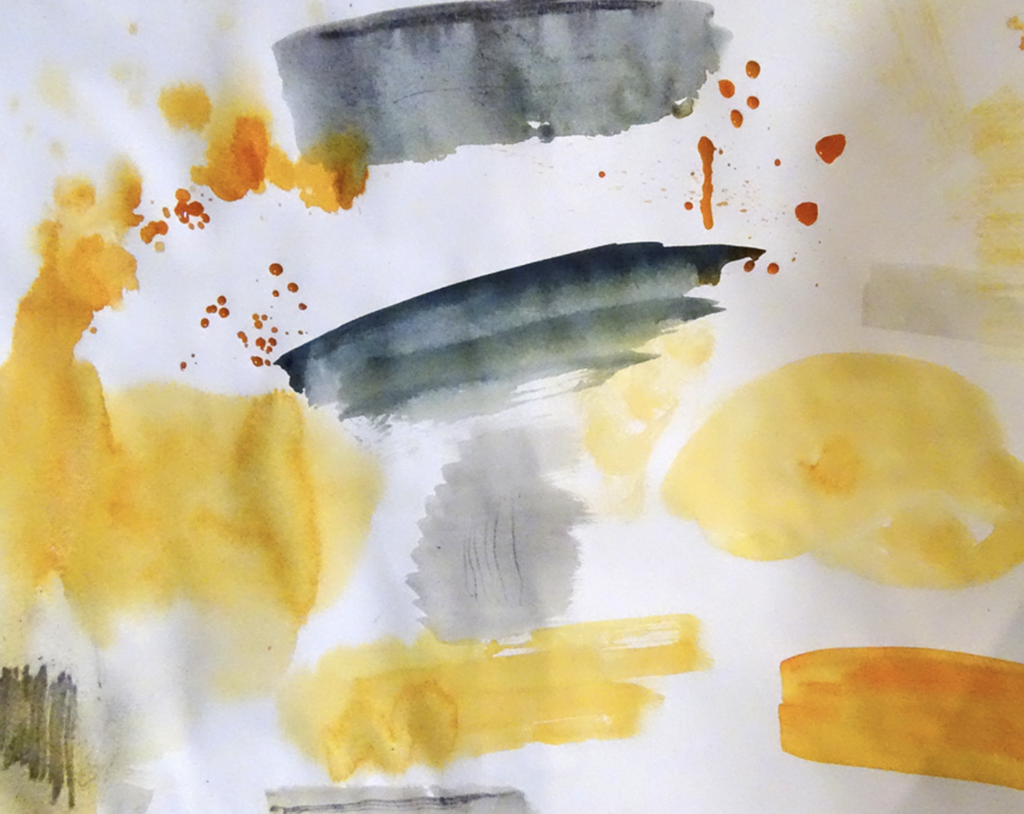
Working on sheets of paper or in sketchbooks, start with an exploration of what watercolour can do. Give children the opportunity to discover for themselves the way watercolour acts, and to decide what they like about it as a medium.
Take the opportunity to remind children about the names of colours, and to highlight primary colours, BUT let them explore all colours – they will start to understand colour mixing through casual experience and accident.
In the first instance the children aren’t drawing anything, instead they are just mark making with watercolour on paper. The journey is as important as the outcome.
To aid your exploration take a look at the following resources:
The two videos above are made for slightly older children. Watch as a teacher to build your skill, and decide if you want to show any sections directly to your pupils.
- Week 2: Look & Talk
Explore the Work of Paul Klee & Emma Burleigh
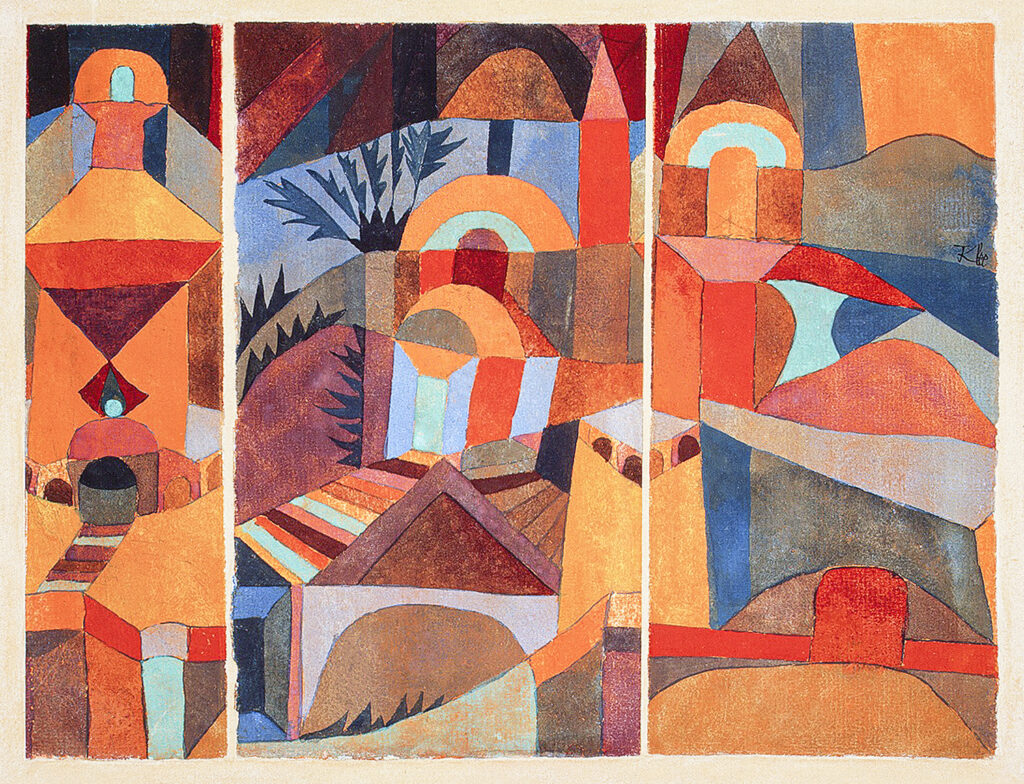
Temple Gardens (1920) by Paul Klee. Original from The MET Museum Explore our free to access “Talking Points: Paul Klee” resource, and see the work of Emma Burleigh (who made the videos above). Talk as a class about your shared and individual responses to the work.
Use the “Making Visual Notes” resource to encourage children to fill a couple of sketchbook pages with their personal responses to the artworks.
- Week 3: Developing Skills
Building Imagery Through Watercolour
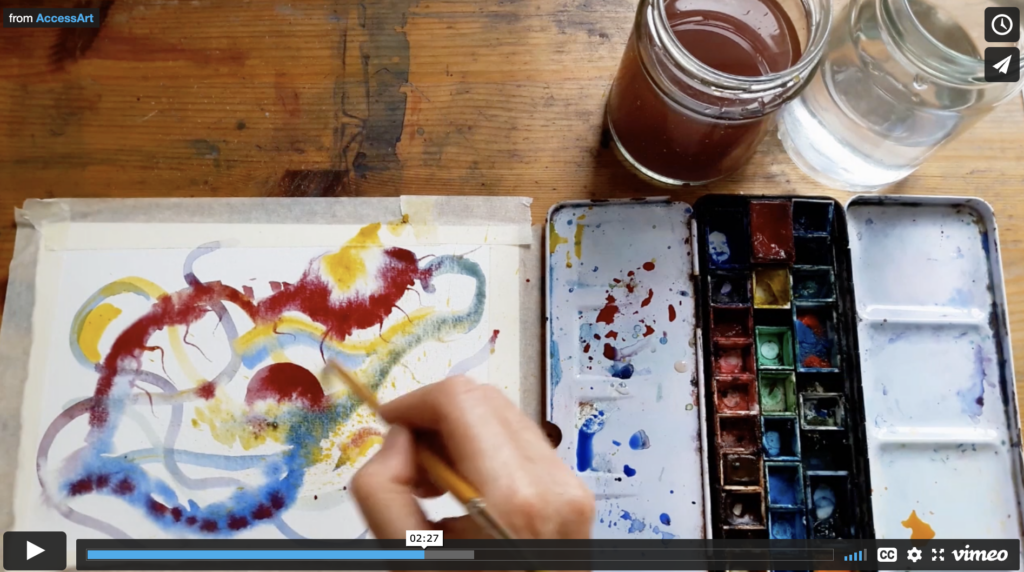
Working on larger sheets of cartridge paper, children will continue to explore the kinds of marks that can be made with watercolour and the various techniques that can be used, this time working towards developing imagery from the imagination.
Watch Emma’s video with the pupils, as she talks you through the process of the task.
- Week 4 & 5: Continue Painting Development
Working with Momentum and Focus
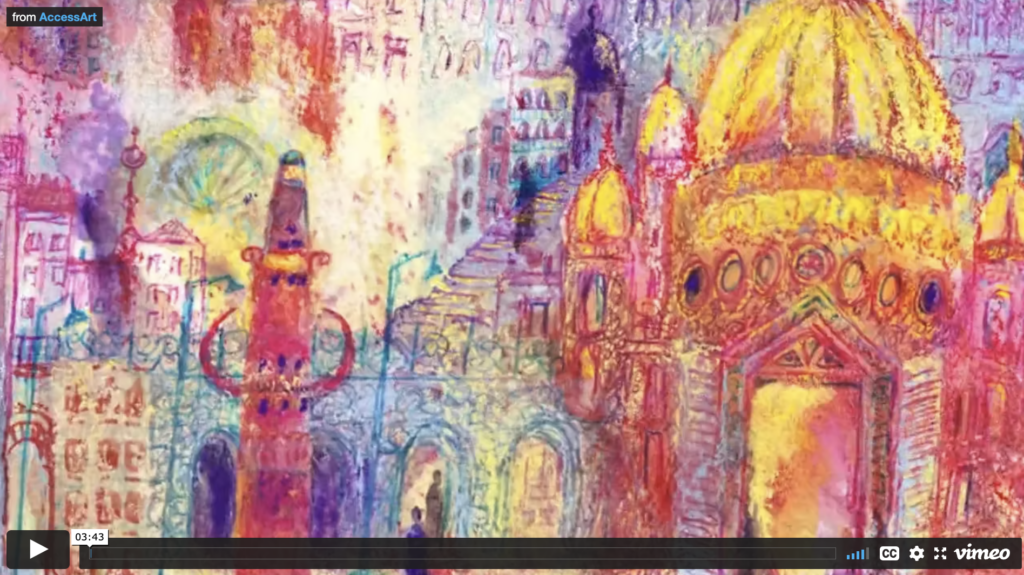
Depending upon your pupils, develop the work and skills in the following ways:
-
If pupils need more time, allow them more time to work on the paintings they did in the previous week.
-
If pupils have “finished”, invite them to make another painting using the same exploratory method, this time perhaps choosing different colours as a starting point.
-
Consider playing music in the classroom as the children paint. How does it change the energy levels and mood of the work?
-
If you are connecting this pathway to a curriculum theme, such as Continents, Oceans, Maps, Weather, Cities, Villages, Plants, Animals etc, then you may want to introduce the idea that children can explore these themes through watercolour painting BUT keep the exploration loose and open: don’t try to resist their exploration of the medium by controlling a desired “recognisable” end result.
-
If you have some pupils who might like to push it further, watch “Part Three” from Emma Burleigh in which she works into dry watercolours with pen, pencils, crayons etc to build the image further.
-
- Week 6
Share, reflect, discuss
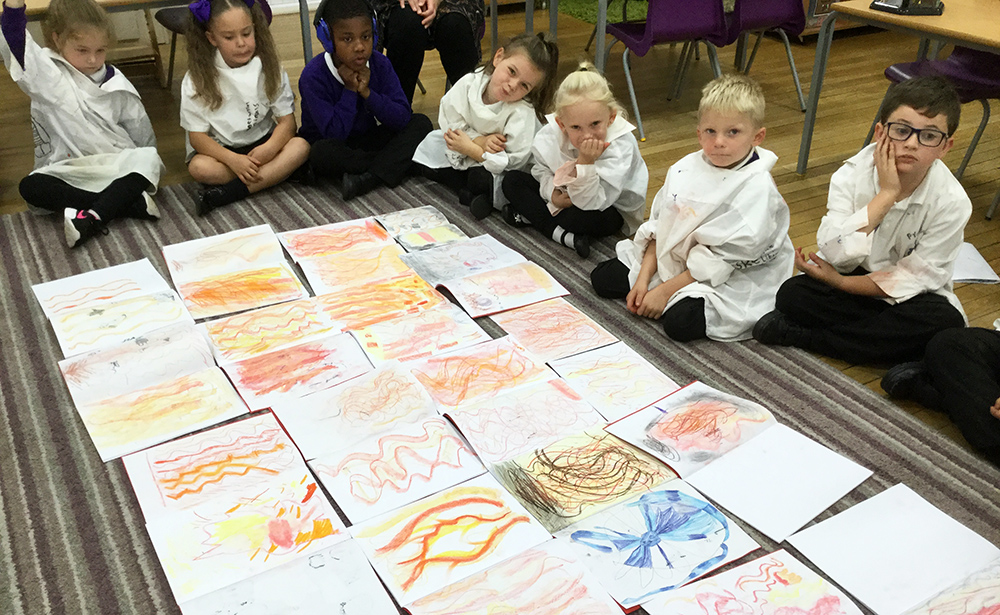
Time to see the work which has been made, talk about intention and outcome.
Invite children to display the work in a clear space, and walk around the work as if they are in a gallery. Give the work the respect it deserves. Remind the children of their hardwork.
If you have class cameras or tablets, invite the children to document their work, working in pairs or teams.
Use the resource here to help you run a class “crit” to finish the project.
See the Pathway Used in Schools…
